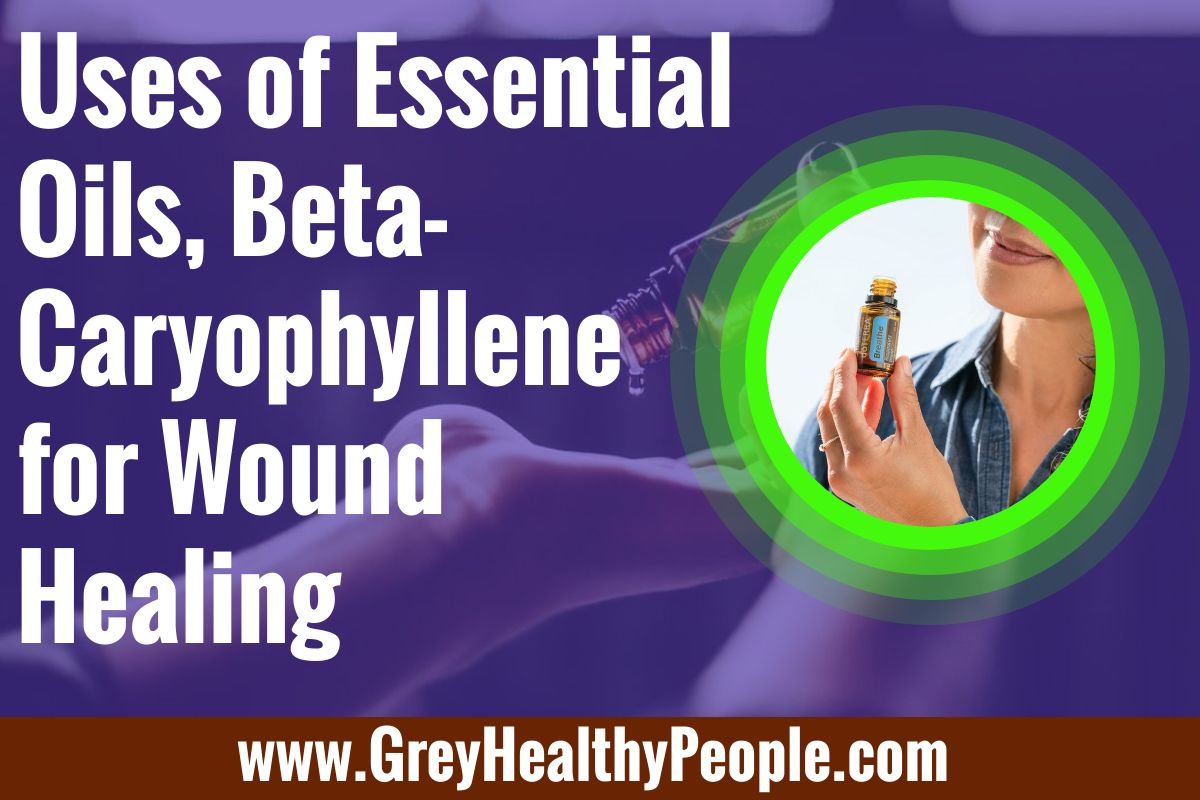New Discoveries in Indiana
A group of scientists from Indiana University found that there is a chemical compound in essential oils that improved the process of wound healing in mice when it was applied topically to the affected area on the mouse. This team of scientists has the firm belief that what they have found will guide the wound care industry toward new treatments for injuries sustained to the flesh in human beings.
The Chemical Compound Beta-Caryophyllene
The chemical compound is beta-caryophyllene. The element can be found in lavender, ylang-ylang, and rosemary. It is also found in a variety of spices and herbs such as black pepper. The team of IU scientists reported that Beta-caryophyllene increased the cell growth and migration needed to heal wounds. Additionally, the treated tissue showed signs of elevated gene expression of hair follicle stem cells. No olfactory system involvement was found.
The study “Beta-caryophyllene enhances wound healing through multiple routes” was published in the journal PLOS ONE.
Testing Out Beta-Caryophyllene
Beta-caryophyllene is a bicyclic sesquiterpene that is very distinctive in its aroma. It can be found in a number of spices and herbs. The team of scientists at IU discovered that beta-caryophyllene is a ligand of the CB2. When CB2 wakes up, it goes to work on any pain in the body. Our bodies send signals that trigger inflammatory responses when pain is felt. The hypothesis was that beta-caryophyllene can have a positive influence on faster healing of chronic wounds by easing inflammatory issues. Mice with wounds on their skin were treated with beta-caryophyllene. The wounds began to re-epithelialize quicker than the untreated wound. Cell proliferation and migration evident in the tissue that was treated with beta-caryophyllene suggested that the heightened rate of re-epithelialization is the outcome.
Whether You Are Male or Female may Impact Treatment Efficacy
An interesting aspect of the study suggests that there are sex differences in the level of impact the beta-caryophyllene will have on the patient. The female mice had the most prominent re-epithelialization after being exposed to the beta-caryophyllene. The study suggests that synergistic impacts of multiple pathways generated by the chemical compounds that are found in essentials are beneficial for topic use for the healing of wounds.
The IU scientists are the first to find improved healing of a wound at the chemical-compound level, coupled with alterations in the skin’s gene expressions. The changes in gene expression that were seen didn’t just suggest wound healing elevation, but the belief of the scientists is that less scars will form thus providing the outcome every physician wants: a full recovery.
Essential Oils have been used Since Ancient Egypt
This study demonstrates that essential oils provide benefits to humans; but, it’s not via the sense of smell. Essential oils are all-natural oils that are concentrated. The oils are extracted from plants of various sorts. The usage of essential oils can be traced to ancient Egypt. There has been a resurgence of essential oils in the United States over the past several years as the aromatherapy market has ballooned.
Could Essential Oils Eliminate the Inflammation Stage
There are several stages to the wound healing process, beginning with inflammation. The next stage is the stage where cell proliferation takes place, and the remodelling phase. Scientifically, the idealistic outcome of studies would be discovering a way to suppress the inflammatory stage in order to switch to the next stage quicker. By activating the CB2 receptor, the group of Indiana scientists believe they have found a way to achieve this outcome in the healing of human wounds. The belief is that the achievement may be complicated, though. The study suggests that there may be involvement of more routes than just the CB2 receptor.
Do Not Begin Self-Treating with Essential Oils
The study has resulted in promising developments in the relationship between wound care and essential oils but treating your wounds with any essential oil you find is not advised. The oils used in the study had a pinpointed chemical-compound with a purity that was known. The essential oil was added to a specific concentration to dilute it.
All oils are different. You may think the lavender oil you use and the lavender oil your sister who lives 752 miles away uses are the same. They are not. When and where the lavender was harvested matters. How it was stored matters. All these factors influence the chemical composition of the oil.
What’s Next?
The next step for the researchers at IU will be to determine how the beta-caryophyllene can be used to treat flesh wounds in human beings. A better understanding of the mechanisms that heighten the process of healing is needed. The right chemical-compound combination that can serve as a drug delivery accelerator and a chemical stabilizer needs to be found. This is a must for the prevention or suppression of allergic reactions triggered by chemical-compound oxidation.
More tests are needed before the chemical compound can be used clinically. The day may come when a medication or a delivery method for drugs using essential oil compounds very soon thanks to a group of scientists at IU.
ABOUT THE AUTHOR
Heidi West is a medical writer for Vohra Wound Physicians, a national wound care physician group. She writes about healthcare and technology in the medical industry.




